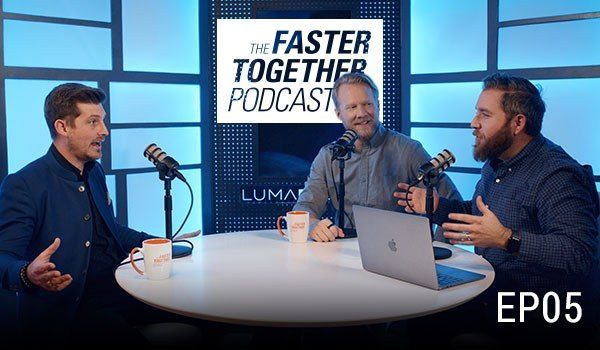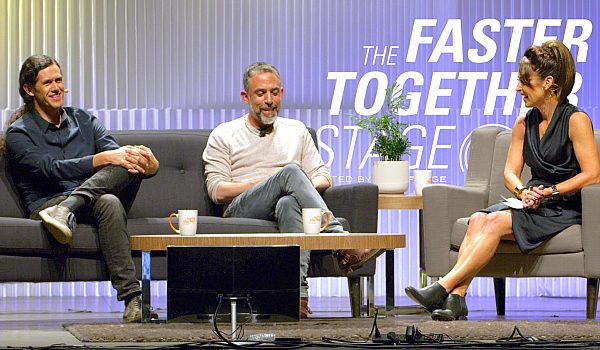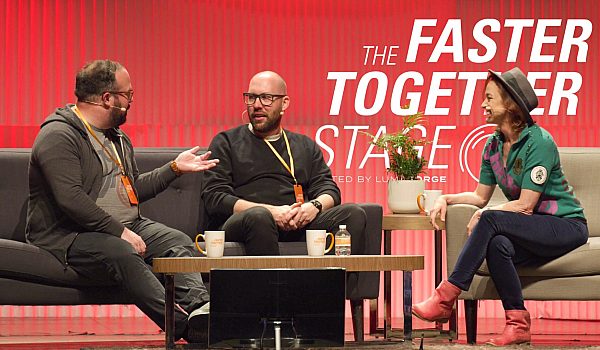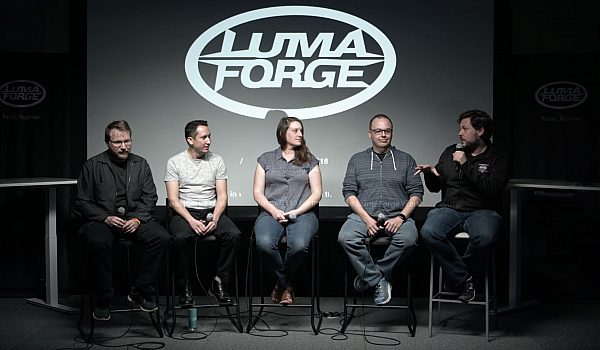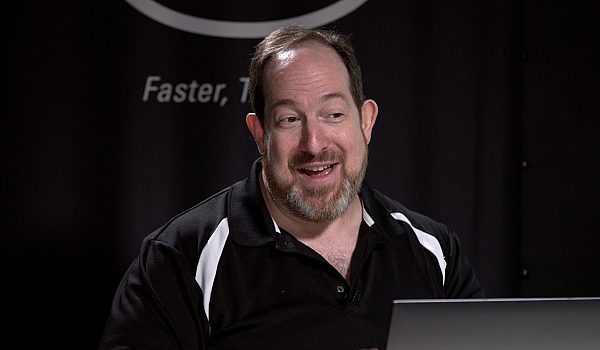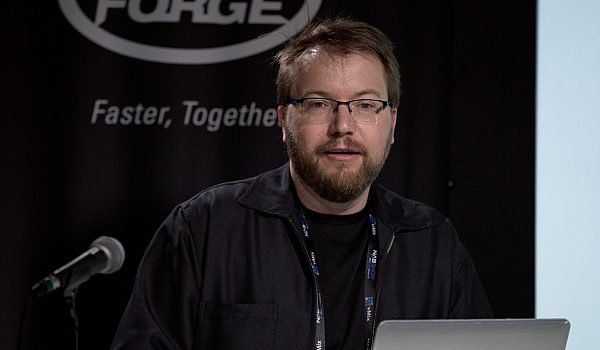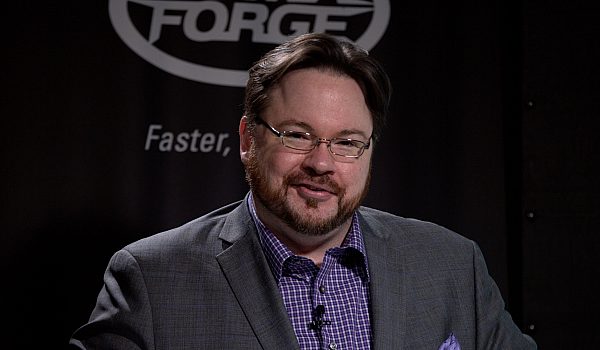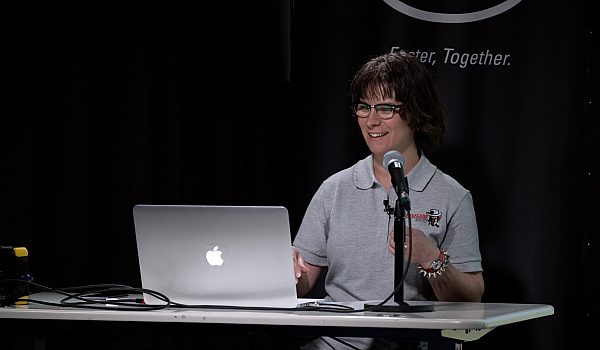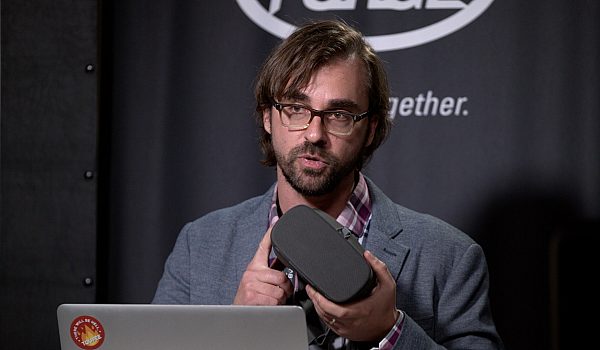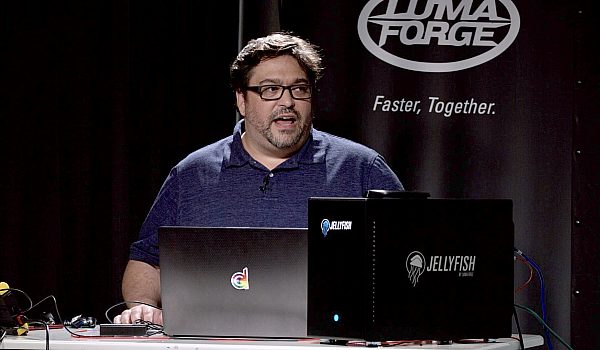Steve Hullfish, author of "Art of the Cut" shares editing knowledge he has gained through interviews from the world's best movie editors. Learn important tips for approaching a feature film from editors of major movies like Arrival, Bladerunner 2049, Apollo 13 and more.
- Thank you. Stop clapping, I only got 15 minutes. Fifteen minutes to talk about what I learned from 150 guys. Okay so this is what I learned from 150 of the top editors. These are five of the books that I have written if you haven't read any of the books that I have written. This is the one that I'm most proud of. You're not supposed to have a favorite child, but this is definitely it. Fifty editors from 19 countries, 12 Oscar winners, 40 Oscar nominees, numerous Emmy winners, more than 1,000 years of editing wisdom, and over 1,000 films and over 1,000 TV shows. So this is a bunch of people that really know what they're talking about. And it's curated into a virtual round table conversation about the topics editors need to know. And since the book, I've done an additional 90 interviews.
So I wanna talk a little bit about what I've learned from those people. I really, one of the reasons why I did this series is because I was cutting films and I didn't really work my way up through the assistant editor path that so many people get a chance to and so didnt' really have a mentor, I've been editing for 32 years but I don't know that I know what I'm doin'. And so it's really exciting for me to sit down and talk to these guys and really learn at their feet basically. One of the big things that I learned was because I do think I'm a very experienced editor and like probably most of us if you guys, editors out there, is it everybody, pretty much everybody. You know what you're doin' right? You're, hey I cut it, this is the way it is. Live with it, you know. I'm the editor, this is great, right. But I really have learned that I need to back my ego off a little bit. You need to have an ego so you have, you know that you have something to say. You have input into the final product. But you have to also realize your job is really to deliver the director's vision.
So remember when you're collaborating, remember, it's not about you, it's about the final product. Another thing is, bad ideas can lead to good ideas. This is just a huge thing. You think somebody says just the stupidest thing in the world, you know like, okay that's just dumb. I'm not gonna do that, but I wanna point out a great story that I learned from Joe Walker. Jo was cutting, no, yeah Rivals\ so he was cutting Rival. They didn't shoot a scene where they where they wanted Amy Abrams character to be dreaming like in the alien language. I don't know if you're, like if you learn a new language, that's one of the ways you know you're really learning Spanish or Russian or whatever because you start dreaming in that language. So they wanted a scene like that but they had not shot it. And he goes, here's what I think we could do. If we take this one shot from this one scene that wasn't shot for this purpose and then that other shot from this scene and then we get the graphics guys to make like an alien monster thing.
And then we'll just make a scene. And Joe's like that's never gonna work. But what did he do? He put the scenes together like the director said, and he's like, yeah it doesn't work. But I can see that this might actually work. So they then they started to build and they started to go. So this idea that seemed like there's no way you can just build a scene without re-shoots. Build a scene from nothing, sure enough they were able to do it. So be careful not to let your ego get in the way of saying that you can't do something. Also deciding what stays and goes needs to be a process. This is a big thing for me. As an editor one of the first feature films that I worked on I cut, I got the scene and you guys probably know the old adage for script writers that you get into the scenes late as possible and you get out as early as possible. Right that's always what you try to do. And so what did I do? I looked at the scene. I'm like, oh we don't need the first four lines, and we don't need the last three lines and I cut it together and showed it to the director. He's like, whoa what happened to my scene? I' like, you don't need those lines and you don't need those lines. He goes, I need 'em, I need to see what they are. And sure enough, in my own defense, when we go to the end of the film those lines were all cut. So I was right but do you think you get hired again by saying I told you so? No the answer is no you do not get hired again by saying I told you so. So I kept that to myself. But what I didn't realize was the director needs to get on board with it just like you did. You made those decisions, the director can't see that unless he gets to see the whole thing. And he lives with that for a while. And a month goes down and he goes, uh ya think we really need those lines? I'm like, not really. And, you know, maybe we don't. And then another month goes by. I really think we should cut those lines. Let me see how that looks. And you cut 'em out and he plays it and that's the way it ends up. So you need to go, you know what, I'm just gonna trust the process and let, let it go a couple of weeks before I make those kind of decisions.
So the director needs to see things for himself. And he's never gonna own that choice if you don't let him see it the way he saw it, that he wants it. He's never gonna own that choice unless he makes that choice. You can't just tell him, it's gonna be better. 'Cause he'll always wonder or she will always wonder. When you deliver your editor's cut, leave your ego at the door. Mirkovich says he has a great quote, Your movie is never as good as the dailies or as bad as the first cut. And that's kind of an indictment of us, right. 'Cause your like, oh that means the crappiest part of this is when the editors left alone. Now granted we have to put in the entire movie, and we have to do it the way the script is so that's kind of part of the problem but. Leave your ego at the door because there's gonna be a lot of revisions and a lot of complaints and a lot of criticism of your work. Exploring something that is not the solution may lead to the solution. Always allow a bad suggestion to lead to a good suggestion. This guy's brilliant, Steve Hullfish. And then I love Joe Walker's quote, Keep the clay moist. There's not point in saying this won't work.
We're all in the nonlinear age of being able to edit Avid or Final Cut or Mirror what ever you like to edit in. And you, back in the film days, if somebody said oh can we re-edit this. You'd a had to take the film apart and put the film back together and get your trims out of some bin and do all this work. In our day in age, you might as well just do it. Because it's faster to just have that discussion in the NLE than to have it sitting around a table. So keep the clay moist. There's no point in saying this won't work. Editing is editing. This seems like a really stupid quote but I think it's really important. So many young editors like I cut it this way, it's great, I made a fantastic first cut, I'm done. No, I've written six books and countless magazine articles. If you've ever written a term paper in college, If you write it the night before and hand it in, it's gonna suck. But if you write it days and days and days ahead and then you work at it and work at it and fix it and clean it, that is when you're gonna have a great project and so no matter how good that first cut is, you need to realize that you need to keep working. You need to keep refining. That when it goes together in context and you start to see the context of it. All of that stuff is gonna change how you work and so you just might as well be open to it from the beginning of the process and go okay I did the first cut but let's really get started working now because that's when the real editing begins.
I think I've done 150 interviews probably maybe talked to people that have cut 3,000 or 4,000 films and out of all of those people there are maybe stories of 20 people that cut one scene that never changed. That's it, you know. There are people who go, oh yeah the way you saw it in the film, that's exactly the way I cut it the first day. But that is so rare. So just be ready to revise. Editing film is a continual process of refinement. A constant willingness to revise and continue to edit is what makes for a great final edit. So that is that. Steve Mirkovich, you have to go through the steps. It's an evolution of the cut. This is just, it's just the process. And I don't know when it was, maybe when I was cutting shorter form stuff that I really felt like, as soon as I was done with the first pass I was done. But certainly in editing feature film, that first pass just can never be the last pass. You've got to keep going. And you can only really know how to start a scene when you see it in context with the scenes around it. This is one of those big things that a lot people talked about when they're having their assistants cut a piece.
So you know, Lee Smith who cut Dunkirk and just won an Oscar for it, says he lets his assistants cut all the time and sometimes he'll give 'em a scene and he'll go back in there four hours later, five hours later and they'll have, they might have a shot put into the timeline. And he's like what are ya doin'? They're like, well I'm tryin' to find the perfect shot. And like no, no, no, no. That's not the way this works. Because you don't even know what the scene is before this or what the shot is in this movie. You might know the scene because you read it. Maybe you're diligent and you go okay I'm cutting scene 82 so I need to read scene 81 so I know what's leading into scene 82 and I need to read scene 83 so I know what's leading out of it when I'm cutting scene 82. But really you can, when you cut, that scene, the context changes so much that there are a lot of people that I've interviewed that they just say, I really dive right in. I don't worry about finding that perfect shot because if I spend so much time finding that perfect shot, one, by the time I've finished cutting the scene, I might of realized something that even in just that scene, the first shot's not right. Or once I do cut scene 81 into scene 82, I'll go, oh this was the perfect shot but now I'm cutting almost the exact same shot from the exact same shot at the end of scene 81 so that's not gonna work. So now what do I do? And also you might find when you cut scene 81 and scene 82 together that you wanna chop out the last five seconds of scene 81 and the first 10 seconds of scene 82 so now that perfect shot is gone. So don't let that, don't let yourself spend a lot of time doing that. And this is exactly what this quote is about. When you put all the scenes together, the perception of what you have changes. That's Dan Hanley.
And the story is elastic and you have to be prepared to bend with it. This is a really interesting concept for, if you haven't cut a feature film yet, and I hope everybody in this room gets a chance to. One of the things that's really interesting is you think, oh I cut a scene together and I put that scene next to this scene and then the whole thing is done and that makes the movie or it's the way that the script is. But so many movies are drastically restructured from what the original script was. I don't know whether you saw The Martian. The Martian starts out with that whole, the Mars storm and Matt Damon gets lost and they have to leave without him. That was scripted to be a flashback that was supposed to happen almost 90 minutes into the film and that's the way it was cut for months and months and months and it was only like a month or two before they finished editing that they were like, you know what, nobody is really, the audience isn't really liking these other characters, you know that are going back to Earth, they're like, they left the guy. What a bunch of scumbags. And that's the way they felt about it because they didn't get a chance to see the flashback scene where they were truly trying to rescue him and where's Matt? We gotta, we can't leave without him. And then you realize that they have to. And so it was only that they moved that entire section back to the front of the picture that the audience's perception of the movie changed. So you have to realize that the story's elastic. It's something that you as an editor can mold at any time. You don't have to think, oh where this was this scene and this scene and this scene, yeah you know what the scene, the movie's gettin' kind of slow, let's take all those scenes out, and we'll just make a montage out of them. Great, do it. Or you know what, there's a couple of really good scenes at the very front of the movie but the beginning of the movie is kind of starting slow and really we want to get to the point that this happens. You know where the protagonist and the antagonist meet. How quickly can we get to that? Oh but we got all these great scenes? I don't know, stick 'em later in the movie and make 'em flashbacks. Or stick 'em later in the movie and pretend that that's where they go.
So think about the elasticity of the story and don't be committed to the, to the way it's written. And I hate for all you screen writers out there to hear that but that's the way it goes. The approach to editing and the preparation to edit are the same. The goal is to organize the material and understand it. A lot of times that's about figuring out what can be ignored. I love that. You cannot possibly get through an entire feature film with 500 hours of dailies in your brain. It just doesn't happen. You've got to get to the point where you're like okay what is the real stuff that I'm gonna make the scene from? So that's why a lot of people use Selex Reels. I interviewed Joel Pox, Clint Eastwood's editor, like old school guy, and he's like, Selex Reels are for sissies. You cut straight from the bin, let me tell ya. That's the way it works. All right, okay, I will remember that. Biggest trick is to compartmentalize. It's really about getting the material down to smaller bits. You can manage it and study it and compare it. That's why so many people do Selex Reels, you can't even, you know, if you've got 90 minutes to cut a one-minute scene, you can't wrap your head around 90 minutes of material. So you need to get it down to 12 minutes or seven minutes of material for a 90 second scene. And then you go, oh now I can see the way these things could go together so you're always trying to refine. Some people don't do that in Selex Reel.
Some people do it in bins by saying oh this is a good take and that's a bad take and they kinda move it around in the bin. That's a great method if you can do it. But you probably need to start compartmentalizing and getting it down to smaller chunks, especially for documentaries. Instead of trying to judge one shot that's three minutes long I'm just trying to judge tiny beats. The reason whey you want to ignore circle takes and dailies is because the director's picking an entire scene which you might, there might be the worst take of all where the whole thing's out of focus except for one second. That one second's the gold. So don't worry too much about circle takes. Watching dailies is an actual skill. Remember how you shot or a moment originally made you feel. That's important because a lot of that can get lost when you're editing. And getting hired is about who you are and my time is up. And that is about it.
And I wanna leave you with this one final thing right here which is this one. May Angelou, the great poet. People will forget what you said, people will forget what you did, but people will never forget how you made them feel. So remember that being in the edit suite and what you do in an audience. Thank you.


 Mobile
Mobile
 Tower
Tower
 R24
R24
 Builder
Builder
 Manager
Manager
 Connect
Connect
 Kyno
Kyno
 Media Engine
Media Engine
 Remote Access
Remote Access
 Support
Support
